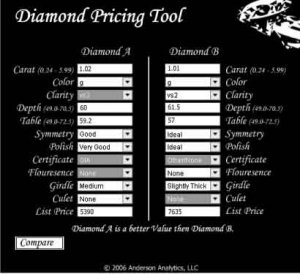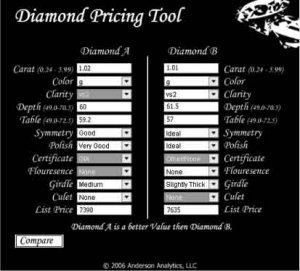- Joined
- Aug 29, 2003
- Messages
- 15,808
Wouldn''t the results of this be more ''what should be'' than what is out there? ...Date: 2/13/2006 11:21:30 PM
Author: Richard Sherwood
Get a copy of Rapaport and input the different deductions or premiums for fluorescence, and then get the DiamCalc program and input the different deductions or premiums for the different cut categories.
By the time you finish you will no longer be a technician/statistician only, but a diamantaire coming out of the cocoon as well. A weary one, granted, but one just the same...
For example... the simpler AGA cut grades do not seem to correlate with prices all that well. Perhaps one could wish they did, but... perhaps that grading system is not widely recognized enough to become an effective price coordinating tool. Like GIA grades have. Or the Rap.
Speaking of AGA and prices: it does seem to relate to prices (taking the database here) in a similar way other normative scores I work with relate with descriptive statistics: the extremes work allot better than the mid range - i.e. the lowest and the highest scores tend to be effective price factors (to some extent, sometimes not even), but nothing in-between does.
[disclaimer: this isn''t saying something bad about AGA - quite on the contrary in fact, and I would be happy to elaborate on that, as an admirer of the system. This is only a trivia matter of empirical research.]





300x240.png)